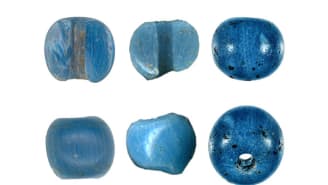5 incredible discoveries of 2021
The one ring (to prevent your hangover)
It would be lovely to uncover a stockpile of gold coins worth more than $300,000 hidden in the walls of a house or a rare dish worth $1.7 million hidden in a drawer after a difficult year.
Rare discovery in unexpected locales, as well as history-making archaeological investigations that shed light on humanity's past, pique our interest. There was no mysterious monolith in the desert to keep us on our toes this year, but there were some astonishing discovery, from as small as an insect track in a famous painting to as large as an entire city.
A gold and purple amethyst ring that may have been worn to prevent hangovers was found at a site where (of course) one of the largest known ancient wineries once stood, the Israel Antiquities Authority announced in November. The jewel was located in the Israeli city of Yavne, quite close to the remains of a warehouse containing wine vessels known as amphorae. The ring's owner was probably a wealthy Byzantine who lived between the 3rd and 7th centuries (and would likely be surprised to learn that we're still hunting for a good hangover cure 1,500 years later).
Elie Haddad, a co-director of the excavation, said in a statement that the item may have "belonged to the owner of the magnificent (winery) warehouse, to a foreman" or to an "unlucky visitor, who dropped and lost their precious ring.
A surprise Rembrandt.
When an artwork fell off the wall in a Roman country house in 2016, what started as a straightforward request to restore the piece set off an unexpected chain of events. It turned out to be a lost Rembrandt painting, once believed to have survived only through copies held at major institutions. The Italian Heritage Foundation certified this summer that "The Adoration of the Magi," an oil on paper mounted on canvas by the prolific Dutch painter, is an authentic. The three wise men encounter the newborn Jesus for the first time in this painting by Rembrandt, which was produced in 1632-33.
An ancient city is slowly uncovered.
What was the year's biggest reveal? From beneath the sand, archaeologists discovered a whole 3,000-year-old metropolis, the largest ever discovered in Egypt. In the fall of 2020, archaeologists began excavating "The Rise of Aten," which was located on the western bank of Luxor.
In a statement, Betsy Bryan, professor of Egyptology at Johns Hopkins University, said, "The finding of this forgotten metropolis is the second most important archeological discovery since the tomb of Tutankhamun."
Archaeologists had unearthed much of the city's southern half as of April, including intact dwellings with walls as high as 10 feet (3 meters), a big bakery, and a bone burial place. According to the statement, the rooms in the residences were filled with ceramic vessels, spinning, weaving, and glass-making tools, as well as jewelry that had been "placed by the ancient residents as if it were yesterday."
A golden mask from a sacrificial pit.
In June, a lightweight gold mask was one of around 500 relics recently excavated from a group of sacrificial pits in southwest China, at the archaeological site Sanxingdui located near Chengdu. Thousands of artifacts have been found at the 4.6-square-mile site since a local farmer accidentally located it a century ago. According to the state-run press agency Xinhua, the mask was likely part of a larger bronze head made during the late Shang dynasty, whose rule ended in 1046 BC. Among the other discoveries were ivory relics, bronze figurines and a jade knife.Tiny beads with historical implications.
Excavated in northern Alaska in the mid-2000s, blueberry-sized Venetian beads are now thought to be the first known European-made items in North America, predating Christopher Columbus's voyage across the Atlantic. The beads may have arrived between 1440 and 1480, decades before Columbus set sail in 1492, according to a study released in January by the University of Alaska Fairbanks. Some of the beads were discovered at Punyik Point, a well-known archaeological site that sits on a historic trade route, along with some plant fibers that were carbon-dated to establish a chronological period.
According to the university, during the 1400s, Venice maintained trading routes to Asia, and the beads may have traveled over the Silk Road to China before heading to Russia's Far East and finally across the Bering Strait to the Arctic.







Comments
Post a Comment